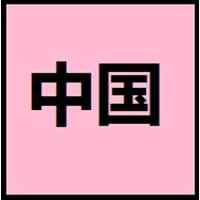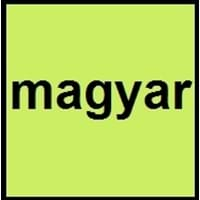Countries
China, Hong Kong, Macau, Singapore, Taiwan
European Union, Hungary, Serbia, Vojvodina, Serbia
National Language
China, Taiwan
Austria, Gambia, Hungary, Romania, Serbia, Slovakia, Slovenia, Ukraine
Second Language
Republic of Brazil
United States of America
Speaking Continents
Asia
Africa, Europe
Minority Language
Indonesia, Malaysia
Austria, Croatia, Romania, Slovakia, Slovenia, Ukraine
Regulated By
Chinese Language Standardization Council, National Commission on Language and Script Work, Promote Mandarin Council
known, Research Institute for Linguistics of the Hungarian Academy of Sciences (Magyar Tudományos Akadémia Nyelvtudományi Intézete)
Interesting Facts
- Chinese language is tonal, since meaning of a word changes according to its tone.
- In Chinese language, there is no grammatical distinction between singular or plural, no declination of verbs according to tense, mood and aspect.
- Hungarian language has only preserved most of its ancient elements.
- 'Magyar' is the Hungarian name for the language, the 'Magyar' is also used as an English word to refer to Hungarian people.
Similar To
Not Available
Mansi and Khanty Languages
Derived From
Not Available
East and South Slavic Languages
Alphabets in
Chinese.jpg#200
Hungarian-alphabets.jpg#200
Scripts
Chinese Characters and derivatives
Latin
Writing Direction
Left-To-Right, Horizontal, Top-To-Bottom
Left-To-Right, Horizontal
Thank You
谢谢 (Xièxiè)
köszönöm
How Are You?
你好吗? (Nǐ hǎo ma?)
Hogy vagy?
Good Night
晚安 (Wǎn'ān)
Jó Éjszakát
Good Evening
晚上好 (Wǎnshàng hǎo)
jó Estét
Good Afternoon
下午好 (Xiàwǔ hǎo)
Jó Napot Kívánok
Good Morning
早安 (Zǎo ān)
jó Reggelt
I Love You
我爱你 (Wǒ ài nǐ)
Szeretlek
Excuse Me
劳驾 (Láojià)
elnézést
Dialect 1
Mandarin
Csángó
Where They Speak
China, Malaysia, Singapore, Taiwan
Bacău County, Rumania
How Many People Speak
Not Available
Where They Speak
China, United States of America
Austria
How Many People Speak
Not Available
Where They Speak
China, Malaysia, Singapore, Vietnam
Székely Land
How Many People Speak
Not Available
Native Name
中文 (zhōngwén)
magyar / magyar nyelv
Alternative Names
Not Available
Magyar
French Name
chinois
hongrois
German Name
Chinesisch
Ungarisch
Pronunciation
Not Available
[ˈmɒɟɒr]
Language Family
Sino-Tibetan Family
Uralic Family
Subgroup
Not Available
Finno-Ugric
Branch
Not Available
Ugric
Early Forms
No early forms
Old Hungarian
Standard Forms
Standard Chinese
Modern Hungarian
Signed Forms
Wenfa Shouyu 文法手語 ("Grammatical Sign Language", Signed Mandarin (Taiwan))
Not Available
Scope
Individual
Individual
ISO 639 6
Not Available
Not Available
Glottocode
sini1245
hung1274
Language Type
Living
Living
Language Linguistic Typology
Subject-Verb-Object
Subject-Object-Verb
Language Morphological Typology
Analytic, Isolating
Agglutinative, Synthetic
All Chinese and Hungarian Dialects
Most languages have dialects where each dialect differ from other dialect with respect to grammar and vocabulary. Here you will get to know all Chinese and Hungarian dialects. Various dialects of Chinese and Hungarian language differ in their pronunciations and words. Dialects of Chinese are spoken in different Chinese Speaking Countries whereas Hungarian Dialects are spoken in different Hungarian speaking countries. Also the number of people speaking Chinese vs Hungarian Dialects varies from few thousands to many millions. Some of the Chinese dialects include: Mandarin, Wu. Hungarian dialects include: Csángó , Oberwart. Also learn about dialects in South American Languages and North American Languages.
Chinese and Hungarian Speaking population
Chinese and Hungarian speaking population is one of the factors based on which Chinese and Hungarian languages can be compared. The total count of Chinese and Hungarian Speaking population in percentage is also given. The percentage of people speaking Chinese language is 16.00 % whereas the percentage of people speaking Hungarian language is 0.19 %. When we compare the speaking population of any two languages we get to know which of two languages is more popular. Find more details about how many people speak Chinese and Hungarian on Chinese vs Hungarian where you will get native speakers, speaking population in percentage and native names.
Chinese and Hungarian Language Codes
Chinese and Hungarian language codes are used in those applications where using language names are tedious. Chinese and Hungarian Language Codes include all the international language codes, glottocodes and linguasphere.





